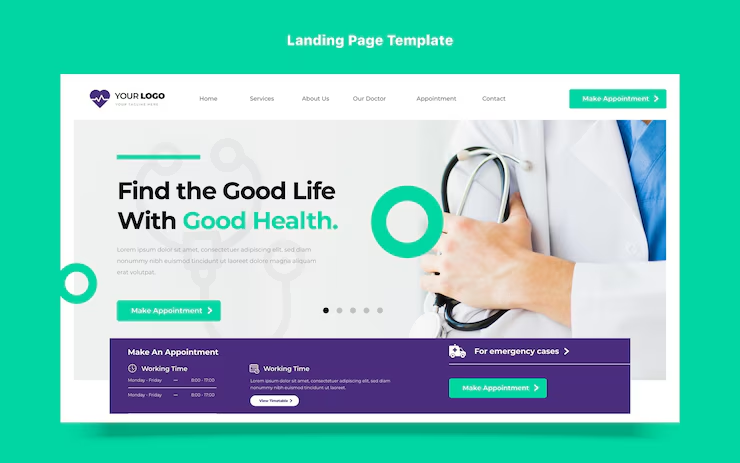Hospice md log in: Easy Access Guide for Doctors

Navigating the world of hospice care as a medical director or physician is no small task. The role demands compassion, precision, and efficiency, especially when it comes to accessing critical systems like hospice MD login portals. These platforms are lifelines for managing patient records, coordinating care, and ensuring compliance with regulations. But let’s be honest—logging into these systems can sometimes feel like solving a puzzle, especially when you’re juggling a busy schedule or dealing with clunky interfaces. In this guide, I’ll walk you through everything you need to know about hospice MD login processes, from accessing portals to troubleshooting issues, all while sharing insights from my own experiences working alongside hospice professionals. Whether you’re a seasoned hospice medical director or new to the field, this article will simplify the process and help you focus on what matters most—caring for your patients.
What Is a Hospice MD Login Portal?
A hospice MD login portal is a secure online platform designed for medical directors and physicians working in hospice care. These portals allow you to access patient records, review care plans, document clinical decisions, and communicate with interdisciplinary teams. They’re built to streamline workflows, ensure compliance with regulations like those from the Centers for Medicare & Medicaid Services (CMS), and protect sensitive patient data under HIPAA guidelines.
From my time consulting with hospice teams, I’ve seen how these portals are game-changers. They centralize everything—medication orders, symptom management notes, and even billing details—saving hours of paperwork. But they can also be a source of frustration if the login process isn’t straightforward or if you’re dealing with multiple systems across different hospice organizations.
Why Is the Hospice MD Login Important?
Hospice medical directors play a pivotal role in overseeing patient care. The login portal is your gateway to:
-
Patient Records: View and update medical histories, diagnoses, and treatment plans.
-
Care Coordination: Collaborate with nurses, social workers, and chaplains to ensure holistic care.
-
Compliance: Document decisions to meet CMS and state regulations.
-
Efficiency: Reduce time spent on administrative tasks so you can focus on patient interactions.
Without a reliable login system, you’re stuck chasing paper trails or waiting on hold with IT support—time better spent with patients and families.
Common Hospice MD Login Platforms
Several platforms dominate the hospice industry, each with its own login process. Based on my interactions with hospice providers, here are the most common ones:
-
PointClickCare: Widely used for its robust electronic health record (EHR) system, tailored for long-term and post-acute care, including hospice.
-
NetSmart (myUnity): A comprehensive platform that integrates clinical, financial, and operational data for hospice providers.
-
Homecare Homebase: Popular for its mobile-friendly interface, ideal for physicians on the go.
-
MatrixCare: Known for its user-friendly design and interoperability with other healthcare systems.
-
WellSky: Offers advanced analytics and reporting tools for hospice medical directors.
Each platform has unique features, but they all share a common goal: making your job easier while ensuring patient data security.
Step-by-Step Guide to Accessing a Hospice MD Login Portal
Let’s break down the login process into simple steps. I’ve worked with enough physicians to know that a clear, no-nonsense guide can save you from banging your head against the keyboard.
Step 1: Identify Your Hospice’s Platform
Your hospice organization will specify which platform they use. Check your onboarding materials, employee handbook, or contact your IT department. If you’re a contractor working with multiple hospices, you might need access to several platforms, so keep a list of URLs and credentials handy.
Step 2: Gather Your Credentials
Most portals require:
-
Username: Often your email address or a unique ID assigned by the hospice.
-
Password: A secure combination of letters, numbers, and symbols.
-
Multi-Factor Authentication (MFA): A secondary verification step, like a code sent to your phone or email.
Pro tip: Use a password manager to store your credentials securely. I’ve seen doctors waste precious time resetting passwords because they were juggling too many logins.
Step 3: Navigate to the Login Page
Open your browser and enter the portal’s URL. For example:
-
PointClickCare: Typically something like https://login.pointclickcare.com
-
NetSmart: Often https://myunity.netsmartcloud.com
-
Homecare Homebase: Check with your hospice for the specific URL.
Bookmark these pages for quick access. If you’re unsure of the URL, ask your hospice administrator or check the organization’s website for a provider login link.
Step 4: Enter Your Credentials
Type your username and password carefully. If MFA is enabled, wait for the code and enter it promptly. Some systems lock you out after a few failed attempts, so double-check your input.
Step 5: Troubleshoot Login Issues
Can’t log in? Here’s what to do:
-
Forgot Password: Click the “Forgot Password” link and follow the prompts to reset it. You’ll usually need to verify your identity via email or phone.
-
Account Locked: Contact your hospice’s IT support. They can unlock your account or reset your credentials.
-
Browser Issues: Clear your browser’s cache or try a different browser. Chrome and Firefox are usually reliable for most platforms.
-
MFA Problems: Ensure your phone number or email is up to date in the system.
I once helped a colleague who was locked out of PointClickCare because her MFA code was going to an old phone number. A quick call to IT fixed it, but it was a reminder to keep contact info current.
Step 6: Explore the Dashboard
Once logged in, you’ll land on the dashboard. Familiarize yourself with key sections like patient charts, care plans, and messaging tools. Most platforms offer tutorials or help sections—take 10 minutes to skim them. It’ll save you hours later.
Why Semantic SEO Matters
Semantic SEO goes beyond stuffing keywords. It’s about creating content that answers user questions comprehensively. Google’s algorithms prioritize articles that provide value, clarity, and relevance. By addressing related terms like “hospice care software” and “secure healthcare login,” this guide appeals to a broader audience while staying focused on the core topic.
Personal Insights: My Experience with Hospice Portals
I’ve spent years working with healthcare professionals, including hospice medical directors, and I’ve seen the highs and lows of EHR systems firsthand. One memorable moment was shadowing a hospice physician who was new to Homecare Homebase. He was frustrated because the login process required MFA, and the code wasn’t arriving. We discovered his email was outdated in the system—a simple fix, but it cost him 30 minutes of patient time. That experience taught me the importance of proactive account management.
Another time, I helped a medical director transition from paper-based records to NetSmart’s myUnity. The learning curve was steep, but once she mastered the login and dashboard, she cut her administrative time in half. These systems aren’t perfect, but they’re powerful when you know how to use them.
Tips for a Smooth Hospice MD Login Experience
Here are practical tips to make your login process seamless, based on my observations and feedback from hospice professionals:
-
Keep Credentials Organized: Use a secure app like LastPass or 1Password to store login details for multiple platforms.
-
Update Contact Info: Ensure your email and phone number are current for MFA and password resets.
-
Set Up Bookmarks: Save portal URLs in your browser for quick access, especially if you work with multiple hospices.
-
Learn Keyboard Shortcuts: Many platforms, like PointClickCare, have shortcuts for navigating dashboards faster.
-
Check System Requirements: Ensure your browser and device meet the platform’s technical specs to avoid glitches.
-
Contact IT Early: If you hit a snag, don’t wait—reach out to your hospice’s IT team immediately.
-
Practice Patience: New systems take time to learn. Dedicate a few hours to explore the portal without the pressure of a deadline.
Common Challenges and How to Overcome Them
Even with the best intentions, login issues can arise. Here’s how to tackle the most common hurdles:
-
Slow Load Times: If the portal is sluggish, check your internet connection or try accessing it during off-peak hours.
-
Inconsistent Interfaces: If you work with multiple hospices, each may use a different platform. Create a cheat sheet with login steps for each.
-
Training Gaps: Some hospices skimp on training. Request a demo or watch online tutorials for your platform.
-
Security Fatigue: MFA and complex passwords can feel like overkill, but they’re critical for HIPAA compliance. Embrace them as part of the job.
The Bigger Picture: Why Login Portals Matter in Hospice Care
Hospice care is about more than medical tasks—it’s about dignity, comfort, and connection. Login portals may seem like a small piece of the puzzle, but they’re the backbone of efficient care delivery. When you can access patient data quickly, you can spend more time listening to families, adjusting pain management plans, or guiding your team through complex cases.
I remember a conversation with a hospice nurse who said, “When the system works, I feel like I can actually be there for my patients.” That stuck with me. A smooth login process isn’t just about convenience—it’s about giving you the freedom to focus on what you do best.
FAQs About Hospice MD Login
What if I don’t know which platform my hospice uses?
Contact your hospice administrator or IT department. They’ll provide the platform name and login URL. You can also check the hospice’s website for a provider portal link.
How do I reset my password?
Use the “Forgot Password” link on the login page. Follow the prompts to verify your identity, usually via email or phone. If that fails, reach out to IT support.
Why is MFA required?
MFA adds an extra layer of security to protect patient data, ensuring compliance with HIPAA and CMS regulations. It’s a standard practice for healthcare portals.
Can I access the portal on my phone?
Most platforms, like Homecare Homebase and MatrixCare, offer mobile apps or responsive web designs. Check with your hospice for app availability or mobile access instructions.
What if I work for multiple hospices?
You’ll likely need separate credentials for each platform. Use a password manager to stay organized and bookmark each portal’s login page.
Conclusion: Mastering the Hospice MD Login
As a hospice medical director, your time is precious. Mastering the hospice MD login process can save you hours and reduce stress, letting you focus on delivering compassionate care. By understanding your platform, organizing your credentials, and troubleshooting issues proactively, you’ll navigate these systems like a pro. And trust me—once you get the hang of it, you’ll wonder how you ever managed without these tools.



